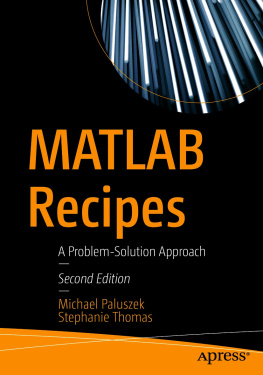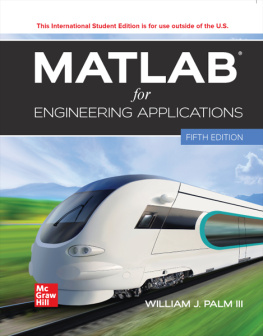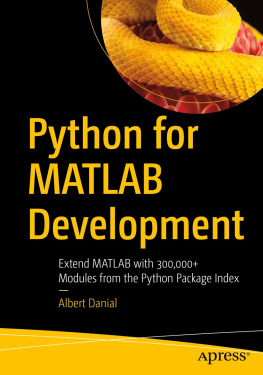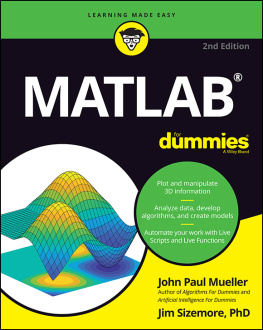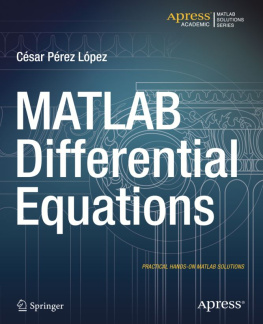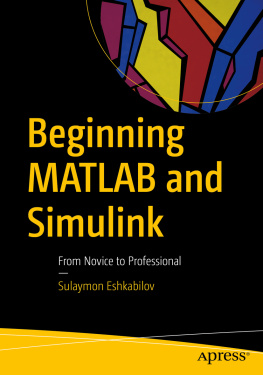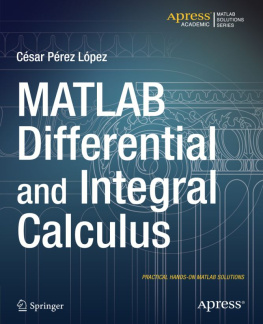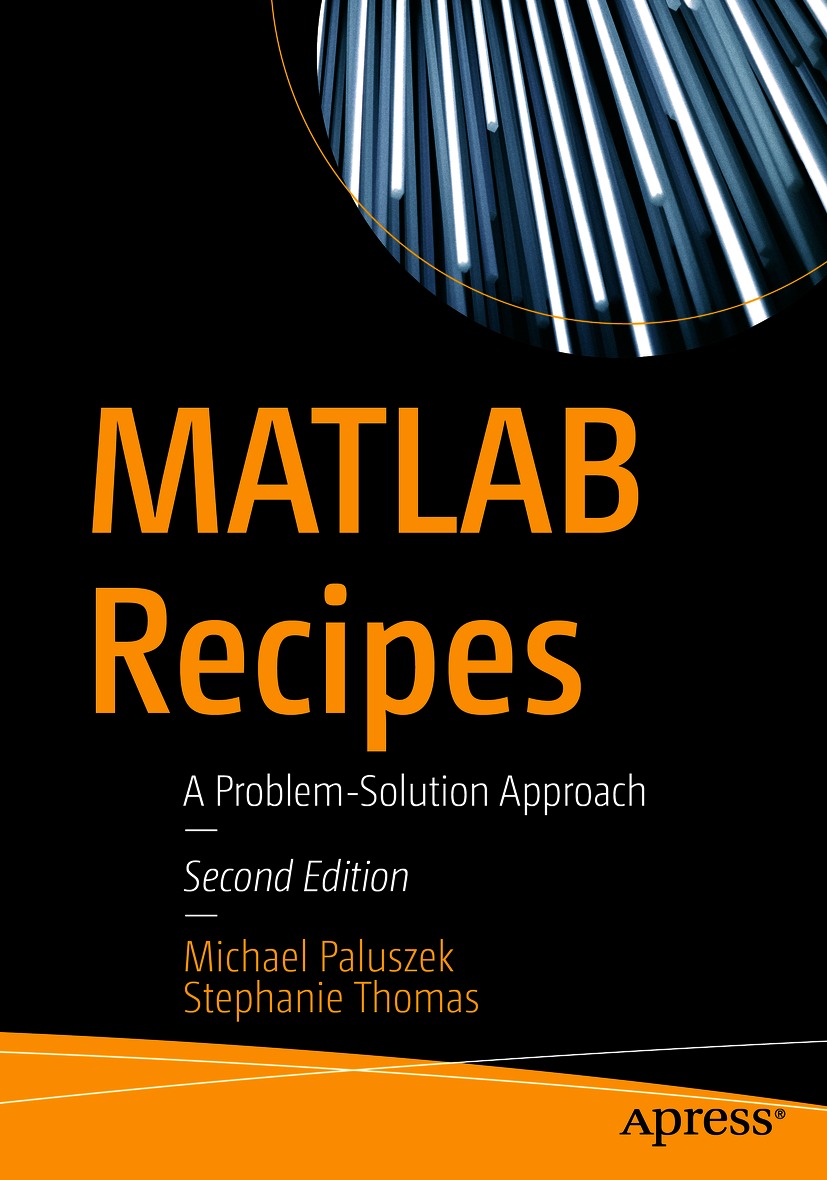Michael Paluszek
Princeton, NJ, USA
Stephanie Thomas
Princeton Junction, NJ, USA
ISBN 978-1-4842-6123-1 e-ISBN 978-1-4842-6124-8
https://doi.org/10.1007/978-1-4842-6124-8
Michael Paluszek and Stephanie Thomas 2020
This work is subject to copyright. All rights are reserved by the Publisher, whether the whole or part of the material is concerned, specifically the rights of translation, reprinting, reuse of illustrations, recitation, broadcasting, reproduction on microfilms or in any other physical way, and transmission or information storage and retrieval, electronic adaptation, computer software, or by similar or dissimilar methodology now known or hereafter developed.
The use of general descriptive names, registered names, trademarks, service marks, etc. in this publication does not imply, even in the absence of a specific statement, that such names are exempt from the relevant protective laws and regulations and therefore free for general use.
The publisher, the authors and the editors are safe to assume that the advice and information in this book are believed to be true and accurate at the date of publication. Neither the publisher nor the authors or the editors give a warranty, expressed or implied, with respect to the material contained herein or for any errors or omissions that may have been made. The publisher remains neutral with regard to jurisdictional claims in published maps and institutional affiliations.
Distributed to the book trade worldwide by Springer Science+Business Media New York, 1 New York Plaza, Suite 4600, New York, NY 10004-1562, USA. Phone 1-800-SPRINGER, fax (201) 348-4505, e-mail orders-ny@springer-sbm.com, or visit www.springeronline.com. Apress Media, LLC is a California LLC and the sole member (owner) is Springer Science + Business Media Finance Inc (SSBM Finance Inc). SSBM Finance Inc is a Delaware corporation.
Introduction
Writing software has become part of the job description for nearly every professional engineer and engineering student. While there are many excellent prebuilt software applications for engineers, almost everyone can benefit by writing custom software for their own problems.
MATLAB had its origins for that very reason. Scientists that needed to do operations on matrices used numerical software written in FORTRAN. At the time, using computer languages required the user to go through the write-compile-link-execute process that was time-consuming and error-prone. MATLAB presented the user with a scripting language that allowed the user to solve many problems with a few lines of a script that executed instantaneously. MATLAB had built-in visualization tools that helped the user better understand the results. Writing MATLAB was a lot more productive and fun than writing FORTRAN.
MATLAB has grown greatly since those days. The power of the basic MATLAB software has grown dramatically, and hundreds of MATLAB libraries are now available, both commercially and as open source. MATLAB is so sophisticated that most new users only use a fraction of its power.
The goal of MATLAB Recipes is to help all users harness the power of MATLAB. This book has two parts. The first part, Chapters 1 through 5, gives a framework that you can use to write high-quality MATLAB code that you, your colleagues, and possibly your customers can utilize. We cover coding practices, graphics, debugging, and other topics in a problem-solution format. You can read these sections from cover to cover or just look at the recipes that interest you and use them in your latest MATLAB code.
The second part of the book, Chapters , shows complete MATLAB applications revolving around the control of and simulation of dynamical systems. Each chapter provides the technical background for the topic, ideas on how you can write a simple control system, and an example of how you might simulate the system. Each system is implemented in a MATLAB script supported by a number of MATLAB functions. Each chapter also highlights a general MATLAB topic, like graphics or writing graphical user interfaces (GUIs). We have deliberately made the control systems simple so that the reader wont need a course in control theory to get results. Control experts can easily take the script and implement their own ideas. We cover a number of areas, ranging from chemical processes to satellites and we apologize if we didnt write an example for your area of interest!
The book has something for everyone from the MATLAB novice to the authors of commercial MATLAB packages. We learned new things writing this book! We hope that you enjoy the book and look forward to seeing your software that it inspires.
We would like to acknowledge Joseph Mueller for his expert editing of this book.
About the Authors
Michael Paluszek is President of Princeton Satellite Systems, Inc. (PSS) in Plainsboro, New Jersey. Mr. Paluszek founded PSS in 1992 to provide aerospace consulting services. He used MATLAB to develop the control system and simulations for the IndoStar-1 geosynchronous communications satellite. This led to the launch of Princeton Satellite Systems first commercial MATLAB toolbox, the Spacecraft Control Toolbox, in 1995. Since then, he has developed toolboxes and software packages for aircraft, submarines, robotics, and nuclear fusion propulsion, resulting in Princeton Satellite Systems current extensive product line. He is working with the Princeton Plasma Physics Laboratory on a compact nuclear fusion reactor for energy generation and space propulsion.
Prior to founding PSS, Mr. Paluszek was an engineer at GE Astro Space in East Windsor, NJ. At GE, he designed the Global Geospace Sciences Polar despun platform control system and led the design of the GPS IIR attitude control system, the Inmarsat-3 attitude control systems, and the Mars Observer delta-V control system, leveraging MATLAB for control design. Mr. Paluszek also worked on the attitude determination system for the DMSP meteorological satellites. He flew communication satellites on over 12 satellite launches, including the GSTAR III recovery, the first transfer of a satellite to an operational orbit using electric thrusters. At Draper Laboratory, Mr. Paluszek worked on the Space Shuttle, Space Station, and submarine navigation. His Space Station work included designing of Control Moment Gyro-based control systems for attitude control.
Mr. Paluszek received his bachelors degree in Electrical Engineering and masters and Engineers degrees in Aeronautics and Astronautics from the Massachusetts Institute of Technology. He is author of numerous papers and has over a dozen US patents. Mr. Paluszek is coauthor of MATLAB Recipes, MATLAB Machine Learning, MATLAB Machine Learning Recipes: A Problem-Solution Approach, and Practical MATLAB Deep Learning, all published by Apress.

